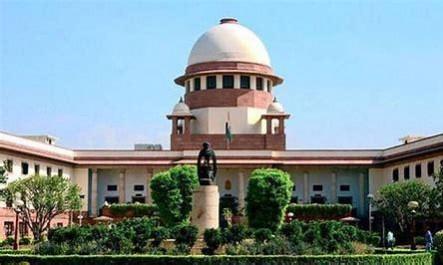There have been strong speculations ever since last month the incumbent Chief Justice of India SA Bobde put forward the name of Justice NV Ramana as his successor. Justice Bobde had recommended his name in a letter addressed to the Ministry of Law and Justice on March 24.

Justice Bobde is due to retire on the 23rd of April and Justice Nuthalapati Venkata Ramana who has been appointed as the 48th Chief Justice of India by President Ram Nath Kovind will take over. With his appointment, as the CJI, both the Ministry and Supreme Court have followed the seniority norm as Justice Ramana is the senior most judge of the Supreme Court.
Justice Ramana was enrolled at the bar in 1983, and was elevated as the Chief Justice of Delhi High Court in 2013 and as a judge of the Supreme Court in 2014.

Who is Justice NV Ramana
Justice Ramana was born into an agricultural family of Andhra Pradesh's Krishna district on August 27, 1957. However, he will not be the first CJI from Andhra Pradesh, as Justice K Subba Rao (who held office from 1966-67) holds that distinction. Justice Ramana will take oath on April 24 and will occupy the top judicial position in the country till August 26, 2022. His recent landmark judgements have already made a mark.
Home makers no less than working husbands
In a historic judgement on Jan 7 this year, a three-judge bench comprising Justices N V Ramana, Abdul Nazeer, and Surya Kant, in a case involving insurance compensation held that the value of a woman's work at home was no less than that of her office going husband and enhanced the insurance compensation to be paid to the relatives of the deceased couple when a car hit their scooter in April 2014 in Delhi.
Justice Ramana cited the 2011 Census, as per which nearly 159.85 million women mentioned "household work" as their main occupation compared to 5.79 million men. He also quoted a recent report of the National Statistical Office, titled Time Use in India-2019, according to which women, on an average, spend nearly 299 minutes a day on unpaid domestic services for household members. This figure was only 97 minutes for men. Similarly, in a day, women spend 134 minutes on unpaid caregiving services for household members as compared to 76 minutes by men, he noted.
Review of suspension of Internet in J&K
Not the one who is new to several landmark, controversial and key judgements, Justice Ramana was also a part of the bench that ruled in favour of an immediate review of suspension of Internet in Jammu and Kashmir. Justice Ramana began delivering the judgement that said that court had not, "delved into the political intent behind the prohibitory orders." He also said, "Our limited concern is to find a balance regarding security and liberty of people. We only here to ensure citizens are provided their rights."
Chief Justice's office comes under the ambit of RTI Act
In 2019, while upholding the landmark judgement of the Delhi High Court, the Supreme Court held that the office of the Chief Justice of India comes under the ambit and definition of "public authority" in the RTI Act. Justice Ramana was a part of the five-judge Constitution bench and he struck a cautionary note, at the time, "There needs to be a balance and the whole bulwark of upholding it is on the Judiciary. Judiciary needs to be protected from such breach." He had also said that only the right dose of transparency should be calibrated with judicial independence.
Archakas exclusion/inclusion not violative of Article 14 if not based on caste
In Adi Saiva Sivachariyargal Nala Sangam v/s Government of TN, 2016, a bench of Justices Ranjan Gogoi and NV Ramana had ruled that the appointment of Archakas in temples would have to be in accordance with the Agamas. However, that is subject to their due identification and conformity with the Constitutional mandates and principles. It also said that Archakas's exclusion/inclusion would not be violative of Article 14, if it is not based on criteria like caste, birth, or any other constitutionally unacceptable parameter.










